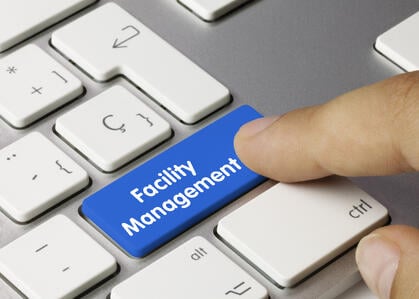 Computer-aided facilities management -- CAFM -- software has been around in one form or another since the 1960s. In the early days, it was limited in function and costly. Over the years, more and more companies started taking advantage of its capabilities and software makers responded. Today's CAFM packages run the gamut from simple inventory trackers to elaborate systems that manage every aspect of a company's facilities and the physical assets in them.
Computer-aided facilities management -- CAFM -- software has been around in one form or another since the 1960s. In the early days, it was limited in function and costly. Over the years, more and more companies started taking advantage of its capabilities and software makers responded. Today's CAFM packages run the gamut from simple inventory trackers to elaborate systems that manage every aspect of a company's facilities and the physical assets in them.
The Early Days
CAFM has been around since the days of large mainframe computers. When it first debuted, companies typically wrote their own custom applications. While this allowed the software to be flexible, it also meant that development costs were extremely high. Typically, the applications started out as inventory trackers and as space forecasting tools. Over the years, additional applications tied to architecture and construction management were added.
With the explosion of computing in the workplace, facilities management software also grew in the 1970s and 1980s. During that time, it also began to morph from just a building inventory tracker to a more full-powered application. Companies started to use it to manage not only building and asset inventories but also to automate the entire management process. Modules for lease and asset management as well as basic accounting tools started to come on line. By the 1990s, the software could handle accounting for leases and managing building costs as well as tracking building systems and assets.
CAFM Today
Modern facilities management software, sometimes also referred to as workplace management systems, comes in a broad range of guises. The most elaborate systems are designed to hook into your company's business intelligence or ERP software, integrating your facilities management right into every other part of your business. This allows you to see, for instance, how lease renewals at a new rate will impact your cash flows while also predicting the impact of warehouse maintenance on your supply chain.
Other companies choose to use CAFM packages that focus on making life simpler instead of doing everything at once. These software programs are typically orders of magnitude less expensive to buy, configure and support, but still bring many of benefits of automating your facilities management. While packages vary, the feature set built into our class-leading REoptimizer® application stands as a benchmark for what to seek:
- Occupancy Cost Analysis. To manage your portfolio, you need to understand what you are spending and where. Occupancy cost analysis tools help you to drill down, line item by line item, and see what you spend in each space and identify where you might have opportunities for savings.
- Critical Date Management. Whether you're tracking lease expiration dates or maintenance schedules, the ability to manage every aspect of your company's portfolio on time is a key part of success in the corporate real estate arena.
- Lease Administration and Document Management. Helping you tame the stacks of paper that are part and parcel of corporate real estate portfolio management is one of the ways that CAFM software like REoptimizer can make you more productive.
- Real Estate Benchmarking. While data is great, context is better. Many CAFM packages help you benchmark properties in your portfolio against each other as a part of their occupancy cost management functionality. REoptimizer® can go one step further and benchmark your portfolio against a competitive set of properties, helping you determine if your occupancy costs or if your property's other performance date are reasonable relative to the surrounding market.
Don't forget to comment and subscribe!








